If Honda does not race, there is no Honda — Soichiro Honda (Founder, Honda Motor Co.)
Honda is possibly the most accomplished car brand in the world. It remains the the only manufacturer to have won both MotoGP and Formula 1 titles in the same year. Honda’s journey from 12 men making motorized bicycles in Japan to an automotive and motorsport powerhouse is a fascinating one. One of the main reasons for the god-like status of Honda among fans is that Honda has long stood for affordable performance.
The whole appeal of Honda cars was that they could punch above their weight without costing a fortune. Over the years Honda has produced some iconic cars and nameplates. Some have stood the test of time while others are mostly relegated to the pages of coffee table books. We’re taking a look at the 10 best Honda cars ever made. We’re also including two particular cars sold under the Acura name in North America, but were quintessentially Honda.
Honda S800
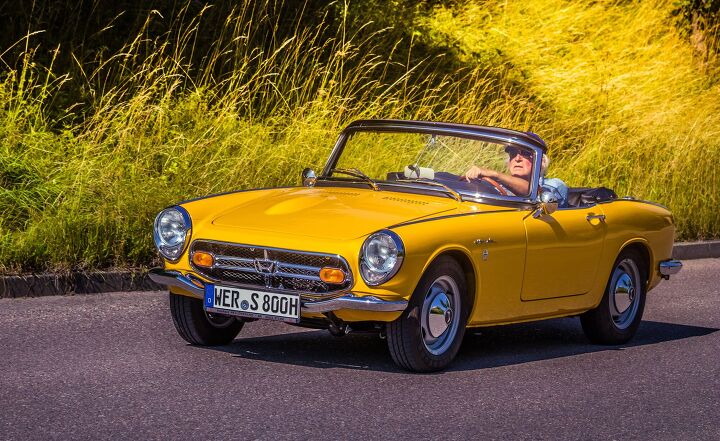
Succeeding the S600, the S800 had a set of sizeable shoes to fill, and fill them it did. It was Honda’s first 100 mph car and went up against British small sports cars like the Triumph Spitfire and the Austin-Healey Sprite. Needless to say it was vastly more reliable and outperformed most of its competition. Armed with a tiny 791 cc four-cylinder engine, it produced a modest 70 hp of max power. But Hondas were never known for big power, it was handling they excelled at, a precedent probably set by the S800.
The rear suspension was independent and featured a chain drive before the company shifted to a live axle setup. It was also the fastest sub-1.0-liter production car in the world at the time. Although it was never officially sold in the US, it was the car that established Honda as the brand to watch out for. In the following years, Honda moved away from rear-drive sports cars to concentrate more on family-friendly vehicles. It would be almost 30 years before Honda revived the S moniker.
Honda Civic

The Civic is Honda’s longest-running nameplate. First debuted in the early ’70s, Honda couldn’t have chosen a better time to introduce the American market to the Civic. The oil crisis of 1973 had people looking for more fuel-efficient alternatives to the heavy V8-powered cars from the era. The Civic was the best option at the time as it was a small yet rather spacious family car with good reliability and a fuel-efficient engine. Compared to cars like the Chevrolet Vega and the explosion-prone-if-rear-ended Ford Pinto, the Civic faced little to no challenge in establishing itself as a household name.
Loading …
In all honesty, we can easily do an entire list on the Civic alone so elaborate and rich is the car’s history but we shall refrain for now. Over the years the Civic grew in size and became more upscale. Currently, the 2020 Honda Civic starts from $21,755 and is available in three different body styles, unlike any other car its class—though the Coupe will disappear from the lineup for 2021.

But by far the biggest turning point in the car’s history was the introduction of the Type R models with the EK9 generation. The US never got the Type R before the current model; instead, the North American continent received the Si models as compensation. The engine was the VTEC 1.6-liter B16A2 inline-four that made 160 hp of max power and came with a five-speed manual gearbox only. Also, the Si was only available as a coupe. But it more than made up for the power deficit with a front double-wishbone setup, which made it an exceptionally well-handling car. The subsequent generation of Si would drop the setup in favor of a MacPherson strut setup and would be available as hatchback only.

The Si suffix became synonymous with the American market and it wasn’t until 2018 that the US officially received its first Type R in the form of the FK8 series. It is still available with a manual only and comes with a 2.0-liter VTEC that makes over 300hp and drives the front wheels. But the original EK9 still remains the crowd favorite.
Honda CRX

Yes, this is technically not a separate model and is based off the Civic but it deserves its own sub-head and here’s why; the CRX, or the Civic CRX, was introduced to the US market to entice younger buyers into getting interested in Honda cars and it worked. The CRX, unlike the 2+2 Japanese version, was only sold as a two-seater in the US.
It was available with two modest little engines, a 1.3-liter four-pot making 58 hp (economy) and a 1.5-liter inline-four making 76 hp (sport). It might not sound like much on paper, but as we mentioned before power was not where it’s at with Honda. The driving dynamics, despite the torsion beam setup, were on par with cars like the VW Golf GTI. By 1985, Honda added fuel injection to the 1.5-liter engine and bumped the power to 91hp in the CRX Si. That, combined with a curb weight of around 1,800 lb, gave the CRX some serious handling chops.

The next generation CRX dropped the Civic prefix and debuted in 1988. It came with a double wishbone setup on all four corners, which in a tiny hatch was insane at the time—and still is. It now came with a new 1.6-liter engine making 105 hp while the Japanese and European versions got the 150 hp and 160 hp VTEC engines. (We suspect just to make America jealous.) The US never even received the 130 hp 1.6-liter engine which would have exponentially improved the little Honda’s performance. Unfortunately, just as the hot hatch market in the US was booming, Honda pulled the plug on the CRX in 1992. The CRX was replaced by the CRX del Sol two-door coupe but due to being heavier and honestly, not near as quirky, it simply failed to take off.
Honda Accord

We will get to the S2o00, we promise. You cannot have the best Honda models list without the Accord. It is the second longest-running nameplate in the Honda lineup after the Civic. Introduced in 1976, as a companion car to the Civic, the Accord quickly established itself as a luxury option to the Civic.
The updated Accord sedan from 1979 came with power steering and air-conditioning, features that were missing from the sub 2.0-liter cars made by domestic automakers. The second oil crisis in 1979 saw people looking for cheaper and more fuel-efficient alternatives to the American gas guzzlers. That combined with Honda’s reliability and the frugality of the 1.8-liter engine resulted in over 200,000 Accords being sold in America. Over the years, Honda kept improving the Accord.
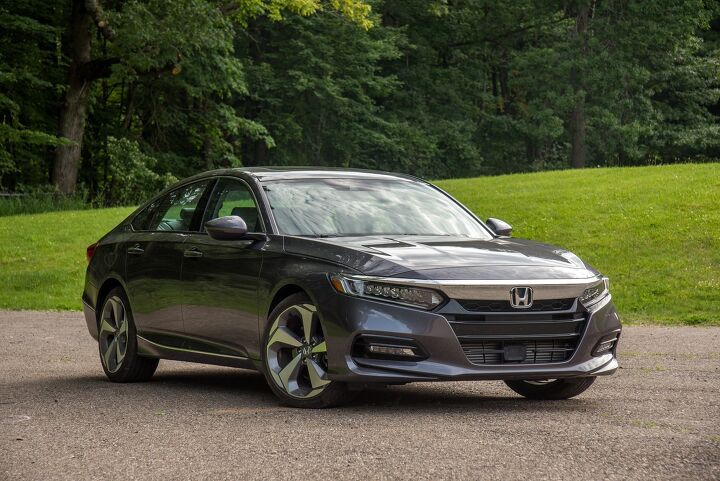
The third generation leaned more towards the sporty side and was the first Honda to employ a double wishbone suspension setup all around. In truth it was more of a necessity as the hood was too low to fit conventional MacPherson struts but that little necessity established the Accord as one of the best-handling sedans on the market. Subsequent generations saw an Accord Type R that—again—the US never got. But the K-series VTEC arrived under the hood in the 2000s in the US along with a V6 coupe version. In 2005, Honda also introduced a hybrid powertrain to the Accord.
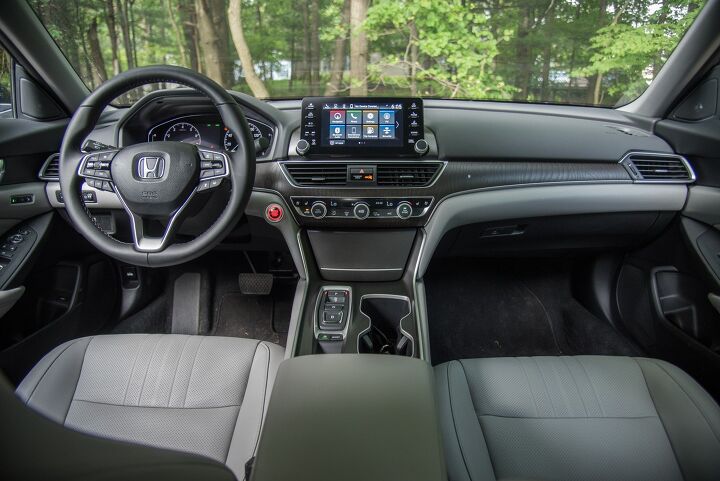
Through the 2010s the Accord shifted its focus back towards the rest of the occupants by making the car larger and more luxurious, stepping further away from the sporty inclinations of the generation before it. Today, the tenth-generation Accord is probably the most balanced Accord to ever go on sale. It features the same 2.0-liter turbo VTEC used in the Civic Type R but with a smaller turbo and makes 250 hp of max power. The suspension setup is sporty enough for an engaging drive and soft enough for a supple ride. Seems like Honda has hit the sweet spot with pin-point accuracy this time.
Honda S2000
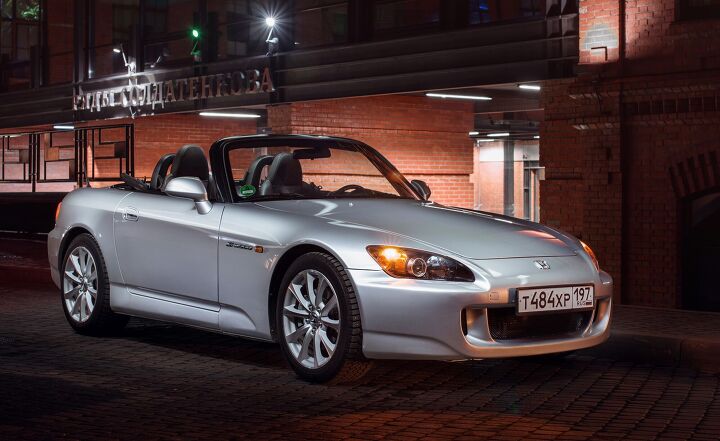
The S800 went out of production in 1970 and the next time a rear-wheel-drive roadster would bear the famed letter would be 1999. It took Honda 29 years to resurrect the iconic S nameplate with the S2000. First showcased in 1995 as the SSM (Sport Study Model), Honda showed that it was serious about building a sports car again. And four years later, the S2000 broke onto the scene and became an instant hit.

The back-to-its-roots sports car was instantly revered by Honda purists and tuners alike. It came with a 2.0-liter four-cylinder DOHC VTEC engine making 237 hp and 153 lb-ft of torque. The front mid-engine RWD layout with a Torsen LSD system and a double-wishbone setup on all four wheels meant the S2000 was one of the best handling roadsters on the market. During its relatively short run of just 10 years till 2009, the engine output remained unchanged and the most significant updates made were to its subframe and suspension for better rigidity and oversteer reduction. You can get a nice clean one today for less than $20,000.
Honda Prelude

The Honda Prelude is probably one of the most under-rated and under-appreciated Hondas ever made. It had double-wishbone suspension and four-wheel steering in the ’80s. By 1993 it had a 2.2-liter VTEC under the hood pushing out 187 hp.
If you told someone in 1993 that you drive a car with a double wishbone setup and four-wheel steering they would think you were talking about a Porsche, definitely not about a certain humble Japanese two-door front-drive sports coupe. The design of the Prelude underwent significant changes over the years. The fourth-gen Prelude was the most ’90s design with no rough edges and a more rounded off design.

The fifth-generation Prelude saw the return of the boxy styling and was the last generation of the coupe before Honda pulled the plug by 2001. In its last generation, it was offered in the US in two versions, a Base and an SH. Though both versions came with the 2.2-liter VTEC making 200 hp, the SH came with torque vectoring to aid mid-corner grip. The four-wheel steering however was skipped in the last generation for the US market. As with most sporty Hondas, the Prelude was a sweetheart of the tuner world and a stock one is hard to come by—but if you do find one, buy it.
Honda Integra
The Honda Integra—or the Acura Integra as we know it in the US—is one of the most iconic names in the automotive industry especially if you’re a JDM fan. The DC2 Integra Type R is considered by many to be the best-handling front-wheel-drive car ever made and is the only Honda Type R vehicle that ever came to the US until the current Civic. And if that’s not enough, the Integra was responsible for introducing the American market to the iconic VTEC engine.
First introduced in 1986, the Integra exploded onto the scene and was an instant hit with the consumers as it sold over 250,000 units in the first generation alone. Although Acura was technically Honda’s luxury arm, the decision to launch the Integra as an Acura established it as a sports car brand, a position that was cemented with the launch of the NSX only a few years later.

The VTEC series of engines powered the Integra throughout its life. Another critical aspect that was present throughout the Integra’s lifespan was the double-wishbone suspension setup. The Integra was available in numerous trims in the US but the most notable ones were the GS-R and of course the Type R That was sold in the US until 2001. The Type R was a demonstration of just what is possible when all restrictions are removed. Introduced in 1997, the DC2 Type R came with air-con as an optional extra and didn’t even have vanity mirrors to save weight.
It was almost 100 lb lighter than the GSR and made 25 hp more. The 1.8-liter VTEC made 195 hp, drove the front wheels, and came with a Helical LSD system for better grip and performance. Plus for the first two years, it was only available in Championship White shade—maybe other colors added weight.
Honda CR-V

Yes, the CR-V isn’t nearly as cool or sporty as most other cars on this list but it marks a critical chapter in Honda’s elaborate history. The CR-V was Honda’s first-ever in-house SUV and has since become one of the company’s best-selling models. The original CR-V arrived in the US in 1997 and was initially available in just one trim. It was based on the Civic platform and came with a modest 2.0-liter engine making 126 hp and 133 lb-ft of torque.
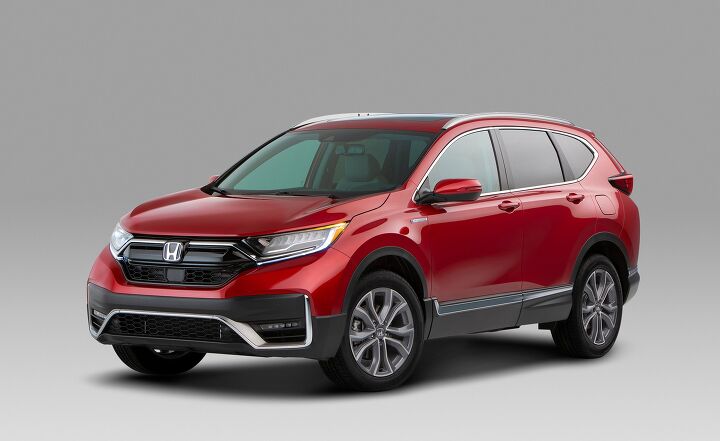
It was barely a large car according to US standards but its unibody construction coupled with independent front suspension lent it car-like driving dynamics which made it an instant favorite in the American market. Plus, its rear folding seats added a touch of versatility missing in SUVs at the time. The CR-V helped cement Honda as a serious player in the SUV market which helped Honda to expand its footprint in the SUV and truck market with the Pilot and the Ridgeline.
SEE ALSO: First Drive: 2020 Honda CR-V Hybrid Review
Honda Insight

Most people tend to credit the Toyota Prius as the vehicle that introduced America to the hybrid car and they are wrong. The first hybrid to arrive in the US market was in fact the Honda Insight. The tiny little three-door contraption could only seat two and came with a tiny 1.0-liter three-cylinder engine. It made a humble 67 hp and used materials like aluminum and magnesium to reduce weight. It was available with a five-speed manual and a CVT gearbox and air conditioning was optional. It was also the first vehicle to feature Honda’s Integrated Motor Assist and with a drag coefficient of just 0.25, it was also the most aerodynamic vehicle of its time.

While it got a head start over the Prius, its two-seater configuration and price tag were the main cause of its dismal sales performance. Over the course of its life it was discontinued twice, once in 2004 and then again in 2014. But it remains an important chapter in Honda’s story as it marked the Japanese car maker’s foray into hybrid vehicles.
Honda NSX

Here it is, the most iconic Honda ever made. Calling the car astonishing would be a gross understatement. It was built to rival Ferraris and Lamborghinis of the time and challenge the norm that supercars were meant to be uncomfortable and ridiculously hard to see out of. It was Japan’s first-ever supercar that showed that performance can be (relatively) affordable. It was built from aluminum and a certain racing driver by the name of Ayrton Senna helped develop it. And we haven’t even gotten to the spec sheet yet.

With double-wishbone suspension setup all around, the NSX was not only a great handling car but featured a supple ride as well. It had great visibility all around. A 3.0-liter VTEC V6 powered the NSX and made 270 hp, all heading to the rear wheels. The engine was available with both a five-speed manual and a four-speed automatic transmission. It was a supercar that you could use everyday. It came with luxurious carpets, air conditioning that worked, traction control, power windows and arguably its single biggest draw draw, pop-up headlamps.
Loading …
Honda improved the NSX over the years and upgraded the engine to 3.2 liters and bumped the power to 290 hp. Honda even made an NSX Type R and in the process threw everything out they had added to make the drive more comfortable in the first place. The Type R was a Japan-only and was never available in the US.

Though the NSX was regarded highly by enthusiasts and journalists alike, there weren’t many buyers for a supercar made by a company known for family hatchbacks. Gordon Murray did base the design of the McLaren F1 on the NSX but it never did the sales numbers it should have. By 2006 the yearly sales dropped to 58 and in 2007 only 2 NSX cars were sold.

Like every cloud has a silver lining, this story does too: despite the lukewarm response towards the end of its life, Honda resurrected the NSX name in 2016. The new NSX holds on to the ethos of the original and combines ICE power with hybrid tech to extract more performance out of the car. We can find the technology it uses on hypercars that cost millions while the NSX, a supercar by a company that makes crossovers and family hatchbacks, offers the same technology and performance at one-eighth the price.
…
Become an AutoGuide insider. Get the latest from the automotive world first by subscribing to our newsletter here.
The Link LonkAugust 07, 2020 at 10:18PM
https://ift.tt/3fEOiFK
Top 10 Best Honda Cars - AutoGuide.com
https://ift.tt/38hkzRl
Honda


No comments:
Post a Comment